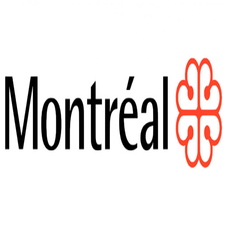mapping
Type of resources
Available actions
Topics
Keywords
Contact for the resource
Provided by
Formats
Representation types
Update frequencies
status
Service types
-

This data set presents the basemap developed as part of the Montreal by Foot (MàP) project in a web tiled map service (_Web Tile Map Service_ WTMS). It is made available in order to allow citizens and partners of the City to create web mapping tools by offering a unique graphic charter, designed specifically to promote pedestrian travel. The Montréal à Pied project aims to improve orientation and pedestrian paths throughout Montreal. The selection and classification of places of interest prioritize pedestrian and local travel. This project includes a cartographic component intended to renew the graphic signature of the representation of the City of Montreal, on digital media and on urban furniture receiving maps of the City. The basemap is intended in particular to support the representation of data [Places of interest] (places of interest) also developed under the MàP project and available as open data.**This third party metadata element was translated using an automated translation tool (Amazon Translate).**
-

The Geomatics Division archives contain over 22,000 aerial photographs. The oldest date from 1930, but they are generally located between 1950 and 2003. The set provides a link to an interactive map allowing the download of aerial photographs from multiple years held by the City for the purposes of producing basic cartography. The images are available throughout the island of Montreal or partially depending on the years and scales of aerial photographs. An aerial photograph is a photograph taken from the air. Normally, these are taken vertically, on board an aircraft, using a highly accurate camera. NOTE1: The collection of the Geomatics Division is distinct from that of the Archives de Montréal. NOTE2: The City distributes the photographs in its possession. However, in In the event that a claimant has claims on this subject, he is invited to submit them to the City. NOTE3: Note that for paper-based archival images, the City generally does not have the original slides. Refer to the index for details.**This third party metadata element was translated using an automated translation tool (Amazon Translate).**
-

## Purpose The Ministry of Agriculture, Food and Agribusiness (OMAFA) is responsible for Ontario’s provincial soil maps and maintains and update them as necessary. Digital Soil Mapping (DSM) is a modern methodology using spatially explicit soils and environmental data to predict soil variation throughout a landscape at a high, consistent resolution. Digital soil maps are being rolled out throughout Ontario’s agricultural land base to update provincial soil maps. ## Reach Provincial soil maps are used in many decision-making processes including: * land use planning * land evaluation * farming practices * best management practices * ecological monitoring * land resource mapping Potential users of this data include: * farmers * certified crop advisors * conservation authorities * academic researchers * land use planners ## Potential impacts Digital soil maps provide more accurate and precise soils data and enables improved management of soil resources across multiple stakeholders. This allows for better decision making to maximize land use efficiency, improve economic efficiency of soil resources and promote soil health and soil conservation. ## Technical description Digital soil mapping combines geo-referenced soil observations with geo-referenced environmental layers to mathematically model soil variation as a function of environment variation. These models are based on well established, but often complex relationships, between soil properties and topography, biology, geology and hydrology.
-

The Ontario Road Network (ORN) Composite product is a segmented derivative of the ORN Road Net Element (ORNELEM) data class. You can use it for mapping and general spatial analysis. Road segment information includes: * addressing * full street name * alternate street name * speed limit * number of lanes * pavement status * road class * jurisdiction * route number * direction of traffic flow * shield type information The ORN is a provincewide geographic database of over 250,000 km of: * municipal roads * provincial highways * resource and recreational roads The ORN is the authoritative source of roads data for the Government of Ontario. This product is derived from the [ORN Road Net Element](https://geohub.lio.gov.on.ca/datasets/mnrf::ontario-road-network-orn-road-net-element/about) data class. It combines three types of geometry: * road elements * ferry connections * virtual roads This product also includes additional road feature layers including: * blocked passages * underpasses * toll points * structures
-
Carbonate in surface sediments.
-

This dataset contains the Great Lakes Shoreline Ecosystem (GLSE) inventory, which is a geospatial digital inventory of: * ecosite polygon mapping * field survey calibration points * associated ground level ecological data It replaces Great Lakes Shoreline Ecosystem mapping products versions 1.0 and 2.0. It is an update to those products and includes the data and information contained in them but now includes data and information for the entire Canadian side of the Great Lakes shoreline including connecting channels, from the land to water or wetland interface to two kilometers inland. Mapping and ground sampling adheres to the Great Lakes Shoreline Ecosystem classification system, (Lee et. al., in prep.) which is a detailed ecological classification and surveying method.
-

Terrestrial Ecosystem Mapping (TEM) project boundaries contains (study areas) and attributes describing each project (project level metadata), plus links to the locations of other data associated with the project (e.g., reports, polygon datasets, plotfiles, field data, legends).TEM divides the landscape into units according to a variety of ecological features including climate, physiography, surficial material, bedrock geology, soils and vegetation. This layer is derived from the STE_TEI_PROJECT_BOUNDARIES_SP layer by filtering on the PROJECT_TYPE attribute. Project Types include: TEM, NEM, TEMNSS, NEMNSS, TEMPRE, NEMPRE, TEMSEI, TEMSET, TEMTSM, TEMWHR, TEMSDM, TEMPRW, NEMPRW, and TEMSEW. Current version: v11 (published on 2024-10-03) Previous versions: v10 (published on 2023-11-14), v9 (published on 2023-03-01), v8 (published on 2016-09-01)
-

Terrain Mapping (TER) project boundaries contains (study areas) and attributes describing each project (project level metadata), plus links to the locations of other data associated with the project (e.g., reports, polygon datasets, plotfiles, legends) for terrain inventory, bioterrain and terrain stability mapping projects. TER divides the landscape into units according to surficial materials, landforms and geomorphological processes using the Terrain Classification System for British Columbia. This layer is derived from the STE_TEI_PROJECT_BOUNDARIES_SP layer by filtering on the PROJECT_TYPE attribute. Project types include: TEM, TEMNSS, TEMPRE, TEMSEI, TEMSET, TEMTSM, TSM, TSMREC, TSMDET, TIM, TBS, TBT, TIMSOI, TEMWHR, TEMSDM, TEMPRW, NEMPRW, and TEMSEW. Current version: v11 (published on 2024-10-03) Previous versions: v10 (published on 2023-11-14), v9 (published on 2023-03-01), v8 (published on 2016-09-01)
 Arctic SDI catalogue
Arctic SDI catalogue